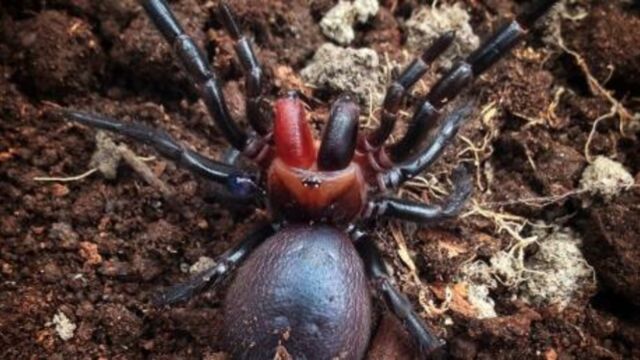This terrifying ‘Dracula spider’ will haunt your dreams

A new specimen of Atrax sutherlandi, a group of mygalomorph spiders, has been found in Australia. It is distinguished by its blood red fangs, similar to that of the famous vampire, Dracula.
A team of Australian biologists has recently discovered a new species of spider in the forest at the Tallaganda National Park, to the south-east of Canberra. This creature has been identified as a member of the Atrax sutherlandi species, a group of mygalomorph spiders considered quite calm and not as dangerous as their formidable cousins the Atrax robustus.
Discover our latest podcast
What makes this new arachnid so special is its blood-red coloured fangs. Contrary to other types of this species that have a black back and a dark brown or plum underbelly, this spider has a blood-red belly and a crimson jaw. Mark Wong, a zoologist at the Australian National University was the first to discover this incredible creature.
More under this adMore under this adA discreet and insectivorous specimen
He identified the spider in a forest during a routine inventory taking.
‘I had never seen a funnel-web spider with those colours before,’ he explained. This surprising characteristic gives the arthropod a slight vampiric look.
Despite its appearance, the Dracula specimen isn’t a bloodsucker, but quite the opposite. Similar to other members of this species, the A. sutherlandi spider is quite discreet. The majority of its diet consists of by insects that it catches by weaving webs above the holes that it lives in.
More under this adMore under this adIntrigued by this strange specimen’s colours, Mark Wong decided to take it to his lab to study it with his colleagues. The team assumes that the spider’s colour is due to a genetic mutation produced by the production of a certain pigment.
A pigmentation defect?
It is also possible that the red colour is a characteristic of all A sutherlandi specimens but that it is generally masked by a more dominant brown or black pigment. Mark Wong continued:
More under this adMore under this adPerhaps in this specimen, the genes for black pigments have not been expressed, thus revealing the red pigmentation underneath.
According to him, it is impossible right now to draw any conclusions from just one individual that has this peculiarity. However, this discovery was exciting nevertheless.
More under this adMore under this adSimilar to this singular case, lots of species of spiders have colours that vary from individual to individual. Sometimes, this colour can even change depending on what they eat or in order to camouflage themselves.
Check out the video above to see footage of the terrifying 'Dracula Spider' for yourself...